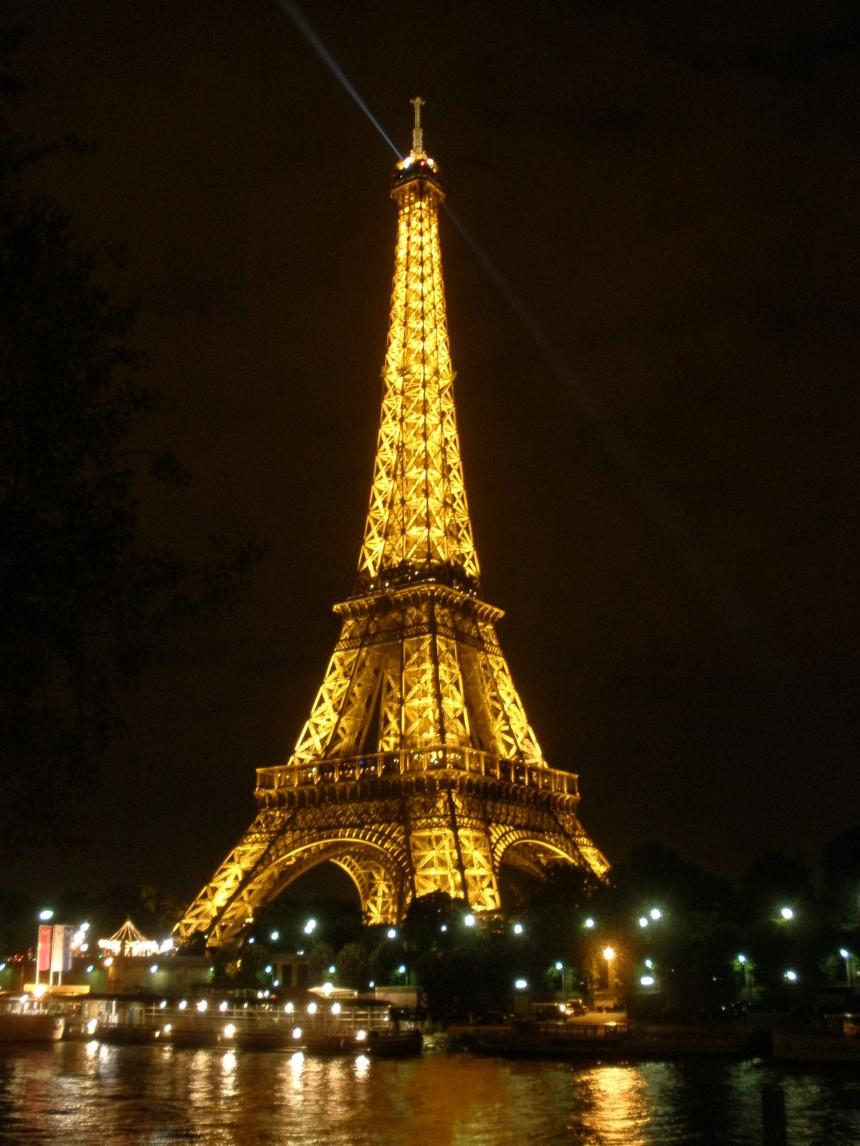
The Eiffel Tower
During my first day in Paris I visited the Eiffel Tower and all I can say is that I was really astonished by its architecture and size. My first thought when I saw the tower was “A picture here will surely get over 50 likes on instagram and facebook.” I was very excited to take pictures next to this phenomenal icon. To me it was just an extraordinary structure without meaning other than it was the icon of Paris. It wasn't until the second time that I visited the tower that I knew the true meaning behind it. After learning the history of how this tower came to be I was able to admire its architecture and beauty better. The fact that the tower was built 100 years after the French revolution in 1889 for the world fair amazes me. Gustave Eiffel, who created the tower, was in my opinion a great engineer and all of his pieces of work, including The Statue of Liberty, are master pieces. Therefore, it seems absurd to me that when this tower was created people found it grotesque because it was made of industrial materials. The Eiffel Tower along with Van Gogh´s ¨Starry Night” and other pieces of artwork were rejected by the people and not considered real art. In fact, the Eiffel Tower was only supposed to last a couple of years, but it soon became the icon of France so it was decided that it shouldn’t be removed. The world fair was created by France with the purpose of showing the world that they were still a strong nation after their defeat in the Franco- Prussian war. The Eiffel Tower not only became the icon of France that demonstrated that they were still a strong nation, but it also brought people from all around the world together as one. In the present you can still see how this master piece brings people from all over the world together. Everyone who lives in or visits Paris goes to the Tower and spends time admiring its beauty. I’m very glad that the tower still remains in the city of Paris because it’s absolutely breathtaking. This icon is not only a great popular place to take pictures at, but it is also a place to admire. It is important to analyze the impact it has had in France and the world. The amount of history behind it is immense and it truly marks the beginning of France as a republic. This icon represents the union of art, science, technology, and most importantly the union of the French people. Thanks to it France was able to show the world that after all the wars it had engaged in it was and continued to be a great united nation. It is impossible not to admire and adore the Eiffel Tower because of all that it has done for our world today.
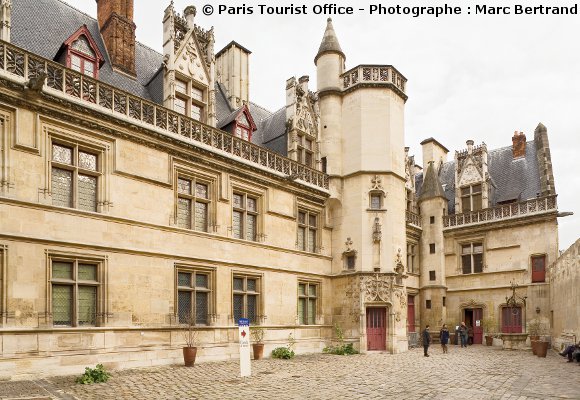
MUSEE DE CLUNY
I love history, but I was never really interested in the Middle Ages, until I visited the Musee de Cluny. As I stood outside of the museum I tried to picture what was once The Abbey of Cluny monastery. The medieval façade seemed very mysterious and intriguing. I couldn’t help but analyze every little corner of the building. In the entrance, there was a life size chess board which seemed pretty unique and fun to me. Chess pieces have always reminded me of the Middle Ages and seeing this at the main entrance made me think about the kings, queens, and knights that lived in the middle ages. Like in the game of chess, it was an honor for knights to die for their king. This medieval belief came to live because the king and queen were seen as gods. One of the paintings in the museum called “Knights of Christ” shows a sense of religious devotion in horsemen. They were willing to die for the lord or the king.
Then, as I entered the museum and observed all of the art work and artifacts I was able to notice that many things seemed religious. This made sense to me due to the fact that before becoming a museum, monks lived in this place. Monks believed that art was a divine revelation, and they looked for God inside the beauty of art. This museum has paintings, tapestries, wooden & stone sculptures, and artifacts. Each different type of art work says something different. Every piece of work has a meaning behind it. For example, one of the tapestries which is known as “The Woman and The Unicorn” describes our five senses in six different tapestries. Each tapestry being represented either by sight, smelling, hearing, tasting, or feeling, leaves the sixth tapestry to the viewer’s imagination. Many believe that the six tapestry represents love. This piece of artwork also lets us know that the Middle Ages, also known as “The Dark Ages,” weren’t really dark but dim. Then, the wooden and stone statues also represent the monarchy and religious figures. The wooden sculptures were more detailed than the stoned sculptures, and in my opinion more admirable. The amount of detail and talent required to make those pieces of art is extraordinary. During the Middle Ages there was a lot of painting without representation. Artist never signed they art work because they only painted for the glorification of god. They were able to transmit a message by their absence. Still some artists like Hans Memling did paint auto-portraits. All of these meaningful pieces of art really changed my perspective towards the Middle Ages and Medieval paintings. I really enjoyed visiting this museum.
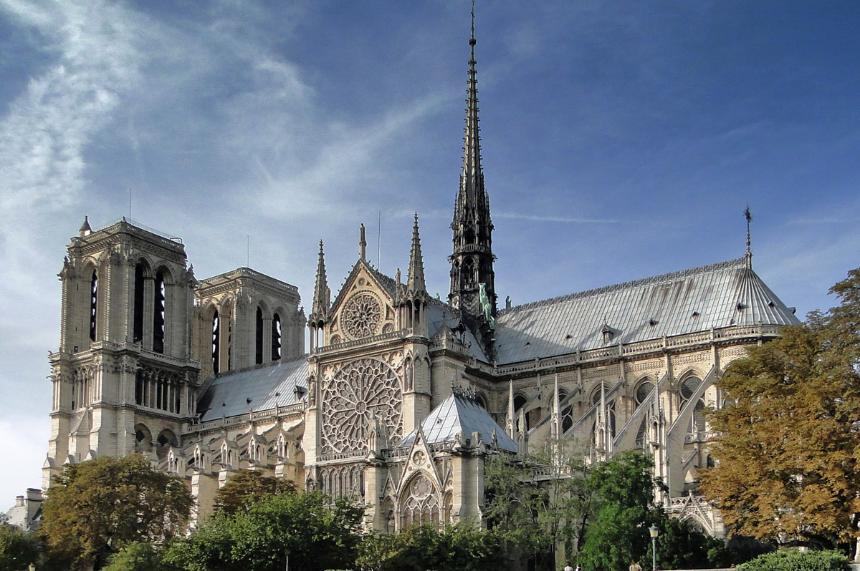
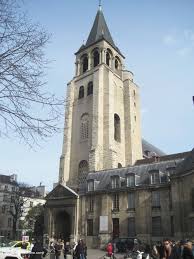
Romanesque and Gothic Churches
I’ve visited many cathedrals throughout my life, but I had never been able to distinguish the differences between them until I visited St. Germain des Près and Notre Dame. When I saw St. Germain des Près, I was not amazed at all because it is just about the same size as any other church I’ve been in before. Still, I was really intrigued to know that it is the oldest church in Paris. It was the history behind this small church that made me want to analyze it and learn more about it. I was able to see the combination of Roman and Gothic styles throughout the church. St. Germain des Près was founded in the 6th century and later destroyed by the Normans. It was later reconstructed into the gothic style by Pope Alexander the third in the 12th century. It was then destroyed again during the French revolution in 1789 and later restored into what it is now. Knowing about its combination of styles, I was able to see that its arches were lower and rounder than Notre Dame’s. St. Germaine des Près also has thick walls and small windows, which is all part of the Romanesque period. Notre Dame, on the other hand, did amaze me the second I saw it. Its Gothic style is full of details and height. Its high and pointy Gothic style was inspired by the Islamic architecture in southern Spain. I noticed that Notre Dame’s arches were pointier and less thick than the Romanesque buildings. Also, unlike St. Germain des Près, the weight of Notre Dame’s roof was put on the outside instead of the inside. A big advancement in architecture and engineering can be seen from the Romanesque to Gothic period. Notre Dame de Paris is truly a beautiful cathedral. It’s organ, which happens to be one of the oldest and largest in the world, was absolutely stunning. In fact, I was able to attend a mass on the first Sunday I was in Paris, and the music was beautiful. During mass, I kept getting the chills because I could not believe the amount and type of sound the organ kept playing. Then, as I walked around the corner, I was able to notice Notre Dame’s gargoyles on the ceilings. Which were added in the 19th century to drain water from the roof to the ground. They showed a new form of art, architecture, and engineering. Overall, Notre Dame’s architecture, engineering, and location is more astonishing than St. Germain des Près.
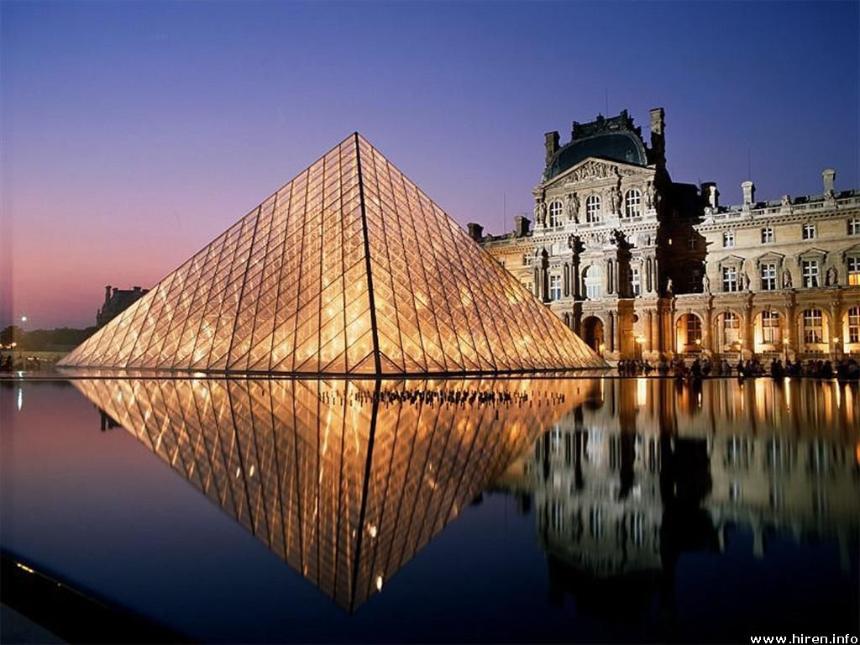
The Louvre
I visited the Louvre museum the last day I was in Paris, which happened to be the first Sunday of the month. The moment I walked out of the metro station and saw the palace in front of me I was in awe. I've been to many castles, but I had never before seen any one like this. The combination of its grandiose walls built during the renaissance and its glass pyramid built in the 20th century is just beautiful. I honestly don't have words to describe the amount of beauty this place contains. The first Sunday of the month is always free, and it just so happens that on this day it is more packed than usual. Many people saw the long line outside of the museum and decided to leave, but I decided to stay and to be honest I loved the large amount of people standing outside the palace. It seemed to me that they gave life and meaning to such an extraordinary place. In spite of the crowds of people, I was still able to admire the museum. Its immensity and beauty overwhelmed me. As I walked through the museum, I could not help but admire the beautiful walls, pillar, floors, and of course art works. Instantly, the Louvre became one of my favorite museums, because of its variety of art work and its beautiful architecture. While admiring the artwork, I couldn't stop thinking about the fact that I was admiring a piece of work that was hundreds of years old inside a palace where the French monarchs once lived. It all seemed pretty amazing to me. I find it very ironic for this palace to be a museum full of precious pieces of work, because it was originally built by King Philippe August to store treasures and for protection from barbarians. Of course throughout time it was turned into a palace by King Charles V and in the 16th century it was transformed into a prestigious palace with the help of Da Vinci. This museum has a lot of history behind it, and it amazes me the amount of history that can be stored in a place at once, whether it is through a piece of artwork or a piece of architecture. One of the most visited paintings in this museum is the Mona Lisa, and although it is very popular to the public I never really knew the story behind it until I visited the museum. It really is a piece of art. The painting itself can be seen as something worthless, but it’s the radical meaning behind it that makes Leonardo Da Vinci's painting so extraordinary. “La Gioconda,” which is the paintings original name, portrays Lisa Gherardini. She is known as “Mona” Lisa which stands for madam in Italian. The paintings obscure and intriguing background along with Lisa’s exposed eyes and hands send depicted messages to the viewer. This was very radical in the 1500’s. Like the Mona Lisa, the museum is packed with hundreds of amazing paintings and sculptures.
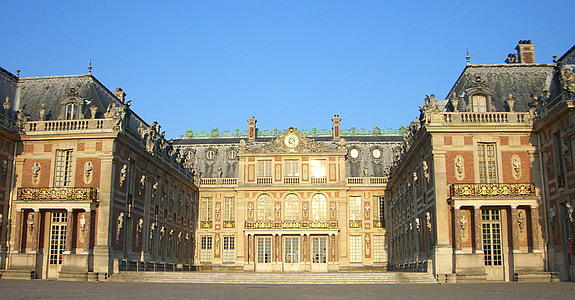
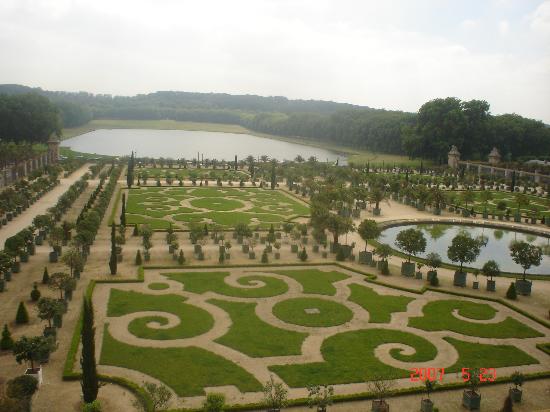
Versailles
As I stepped off the train and walked a couple of blocks, I was able to see the golden gates of the palace from afar. At first glance, the palace did not seem any larger than any other palace I had seen before, but it wasn't until I entered the palace and visited its gardens that I was able to see its unbelievable size. I was then able to understand why King Louis considered the palace and the gardens to be equally important. These gardens are beautiful and "perfect." I was amazed to see the engineering and architecture behind every sequence of trees, flowers, pathways, and lakes. All of the trees and flowers are planted on the perfect spot and trimmed in the perfect shape. Everything is just so grandiose, and as I walked through the gardens I could not help but think that King Louis once walked on the same ground or that Marie Antoinette once brunched at this very same place. Although the monarchs no longer live in Versailles, I was still able to feel their presence all throughout the palace. The gardens are full of sculptures that reminded me of the sun king, and everywhere I walked there was a sculpture or a garden that reminded us of the monarchy and their immense power and wealth. The palace is full of paintings and objects that belonged to King Louis and Marie Antoinette, which make the palace even more admirable. The Salon of War, which showed the nation’s army and its accomplishments, was amazing because it had paintings the size of an entire wall. The Hall of Mirrors, which was the welcome room for guests and aristocrats, is my favorite room. It is breathtaking with all of its detailed ceilings, chandeliers, and mirrored walls. The palace is beautiful and every little corner reflects the power, wealth, and narcissistic actions of the monarchy. There’s no trace or evidence of the French revolution of 1789 in the palace. However, Versailles is as if the revolution had never happened. But after learning the history behind the revolution, it is very easy to see why the French people revolted and guillotined Marie Antoinette and King Louis XVI in 1793. The palace of Versailles is without a doubt beautiful, but at the end of the day it only shows the pretty side behind the monarchs’ lives. It never shows their downfall and expulsion. This palace is known as the museum of the history of France, but in my opinion it only shows the nice part of the history not so much the rude reality of history.
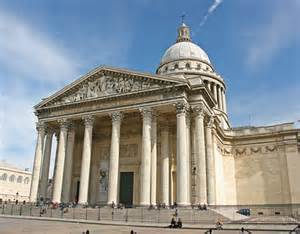
The Pantheon
Out of all of the places I visited in Paris, this was by far my favorite. It is my favorite not because of its extraordinary architecture, but because of the history behind it. The Pantheon, which was once the church of Saint Genevieve, shows a very important part of France’s history with no alterations. This place shows history just like it happened unlike the palace of Versailles. When you walk into the Pantheon, you can see what was once a church. The altar is now occupied by a sculpture of revolutionaries and behind it, there is a religious painting. The Pantheon is built in the shape of a cross, which clearly shows that this building was once a church. In addition, some of the walls have original religious paintings that were done for the church. During the revolution, priests, monks, etc. were thrown out, and it became a Pantheon for revolutionary heroes. Therefore, some religious paintings where replaced by the people when the church was taken over by revolutionaries. There are several sculptures of saints, but also some revolutionary heroes that played a big role in France’s history. After the church’s power was questioned and weakend, a Pantheon was built underneath it to pay tribute to 73 people who fought for France and its freedom from the monarchy in 1789. Inside what used to be a church, is found Foucault’s pendulum by Jean Leon Foucault who proved the rotational movement of the earth. I was really looking forward to see this during my visit, because I’ve never seen anything like that before. But it wasn't there when we went due to restoration. But I was able to see the tombs of Marie & Pierre Curie, philosophers Rousseau and Voltaire, and other major revolutionary heroes. Learning about these people and all that they did really amazed me. Especially because they were not saints, kings, or queens, and they were still honored by the people of France. These people marked the beginning of France as a republic, and they were honored for their great actions and leadership. France needed leaders during the revolution and they knew who to lead their country through the right path. In summary, The Pantheon shows France before and after the revolution through artwork, sculptures, and the church itself.
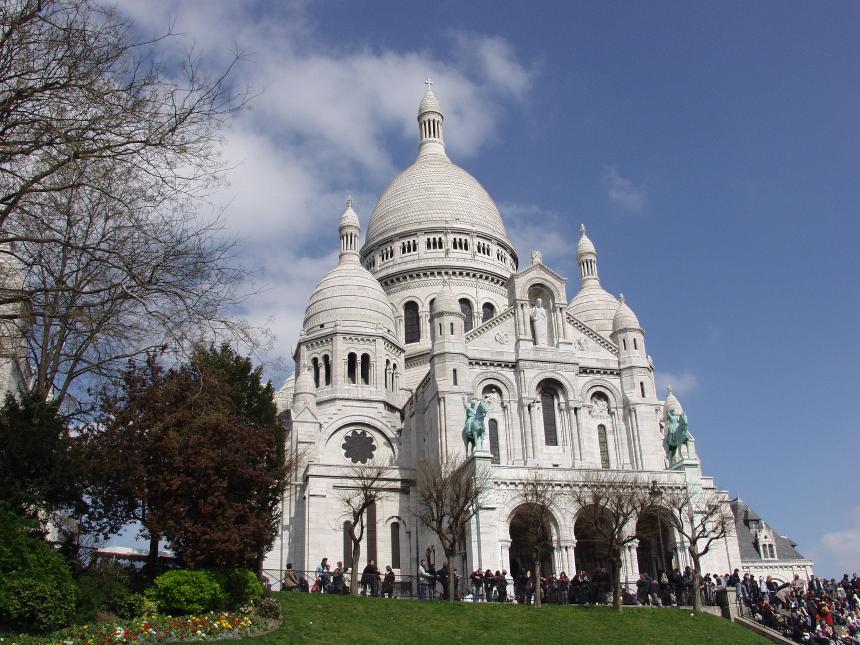
Sacre Coeur
As I walked up the stairs to Montmartre, I looked back and I was astonished with the view. I literally felt like I had Paris at the palm of my hand. I could see everything! It was amazing! Then as I was about to enter the church, I couldn´t help but notice the bohemian feeling that still lives in the streets. Standing just outside of the church stood a group of school girls singing and dancing. This reminded me of other talented people who once lived in Montmartre such as Van Gogh and Dali. These girls really gave the streets joy and happiness through their dancing and singing, just like Dali and Van Gogh did with their paintings. As I listened to the girls singing, I couldn't help but admire the beautiful architecture of the church itself. It’s beautiful chateau Landon stoned walls give the church a unique color. It amazes me how this stone reacts to rain and releases calcite, which ends up always making the church look intensely white and clean. No matter its age. The bronze statues of Christ, Joan of Arc and St. Louis that are impossible to ignore because of their equestrian image excudes an aura of power. Joan of Arc, who is a French heroine, is set before the Basilica, because after the commune of 1871, which was a civil war that was bloodier than the revolution itself, Catholics decided to build this church in honor of those who died and to pay for their sins. In my opinion, the church is so beautiful and breath taking that it has served the Catholics’ purposes. It took a long time for this church to be constructed from 1876 to 1912, which seemed kind of ridiculous to me, but after being in the presence of such an amazing construction, I am now able to comprehend why it took so long for Sacré Coeur to be built. Then as I walked into Sacré Coeur, I was seized with admiration for the mosaic on the ceiling, which is called “Christ in Majesty.” I couldn't stop thinking about the amount of work and dedication that this piece of art took to make, being one of the biggest mosaics in the world. The mosaic shows the Virgin Mary worshipping the sacred heart. It is absolutely wonderful! I honestly got the chills when I walked in and saw the mosaic, because I was not expecting something so majestic to pop out of the blue.
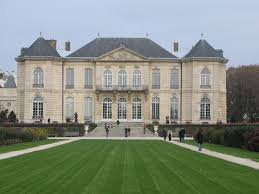
The Rodin Museum
Le Musée de Rodin was very small compared to
other museums we visited, but it reminded me of a mini Versailles. This Museum
was once Rodin’s home and it was absolutely adorable. It had several small
gardens with perfect pathways and perfectly trimmed trees. In fact some trees
had hidden speakers and they would randomly speak to you. This made me feel
like I was with Alice in Wonderland. Then there was the main building where
Rodin lived part of the 19th century, but is now a
museum full of his artwork. One of his main masterpieces is “The Thinker.” Itis
a sculpture of a man who’s just sitting and analyzing life itself. Rodin,
unlike other sculptures, was able to give his sculptures emotion and motion,
which is very hard to do because stone and bronze don’t move. For example, his
sculpture named “Victory of War” shows a great example of motion and emotion.
You can see how she is rejoicing in victory because her mouth is opened and her
arm muscles flexing. Wind hits her and this is noticeable through her bent
wings. Rodin was mainly inspired by his lover Camille Claudel. It was thanks to
her that he was able to portray love and sexuality in his sculptures. Another
very eye catching sculpture was “The Gates to Hell.” This sculpture looks like
a door with three men standing at the top. They are about to enter hell and you
can see through their face, their sad emotions and through their body the
motion of falling. My favorite sculptor by him is “Adam,” because you can see
how Adam feels humiliated after eating out of the fruit from the Garden
of Eden. He was able to show his sadness, embarrassment, and
shame. Rodin was a great Sculptor, and he couldn’t be
compared to anyone else at his time. Like classical sculptures, his sculptures
have a lot of meaning and detail, but he was able to show the viewers what the
sculpture is feeling and how it is moving even though it is stationary.
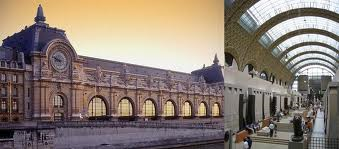
The Orsay Museum
A couple of days before we visited the Orsay museum, Paris was extremely hot. However, the day that we visited the museum, it started pouring rain, and I along with the others got soaked on our way to the museum. It was no longer hot, and as I walked to the museum, I was very excited to see what was once a train station and a setting where the rich would gather. As I stood outside of the museum, I knew that this was nothing like anything I had ever visited before. The large clock on the wall besides the entrance and the ballroom were extremely beautiful. They reminded me of Versailles because of their elegance and golden details. Apart from the amazing architecture of this museum, it also has hundreds of treasures on display inside. From sculptures to impressionists paintings. The impressionism era focused on technique and it was the period of rebellion for all artists. Artist became free, and they were able to paint anything that they found interesting. They no longer had to follow a patron, painting only saints, gods, or the monarchy. The people were not used to these types of paintings therefore they saw them as grotesque and offensive. They were rebellious and nothing like what they had seen before. Still, in my opinion the Renaissance was also a very amazing and radical part of humanity’s history. It 's what freed people’s imaginations and gave everyone a chance to grow physically, mentally, and economically. People no longer had to rely on the monarchy to live.
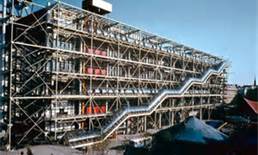
Modern Art
The Pompidou museum was extremely different than any other museum I had ever visited. I really liked that it was a drastic change for me as a tourist to see classical paintings one day and radical pieces of art the next. Many pieces of art were very radical, and I had a hard time understanding them, but I liked that I had to think about the meaning behind each painting. I also really liked that this museum had random objects such as chairs and toilets that made me think. This type of art was intended to provoke thinking and provide enlightenment. When this museum was built this type of art was considered grotesque and sometimes it wasn’t even considered art. It was rejected by society, like all the other different types of art, when they first started a trend. This type of art breaks from tradition and shows an artist’s individuality and originality. What I mostly like about this type of art is its endless amount of opportunities. Abstract paintings give the viewer a chance to think and see what they want to see in the moment.
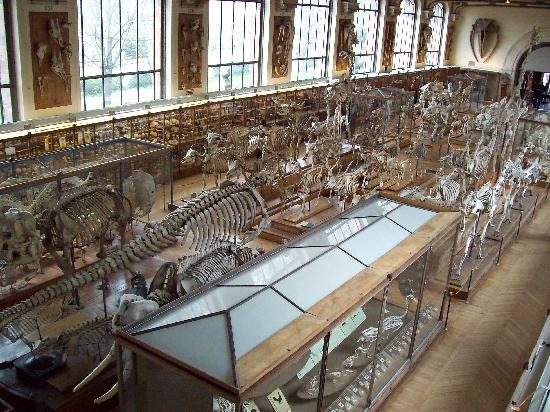
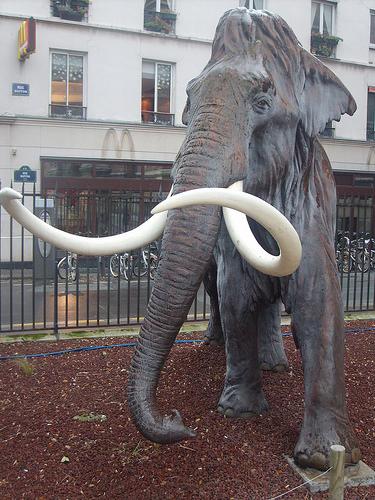
Natural History Museum
The Natural History Museum was one of the last places we visited during our trip to Paris. When I arrived to the site, it came to my surprise that this place was extremely different than all the other places we had visited before. I certainly could not believe that this place was once the "Royal Medicinal Plant Garden" created in 1635 by King Louis. As you walked into the property, you could see people sitting underneath trees having a picnic and children running around playing. Outside of the main entrance, there was a giant statue of a mammoth. Then inside, right next to the door, there was a sculpture of a chimpanzee killing a human. This automatically caught my attention and at first made me feel disgusted. I was disturbed with the idea of a orangutan killing a human. But then as I analyzed the sculpture, I realized that maybe there was a meaning behind this piece of artwork. I was able to understand that it wasn't that grotesque. As I stood around and thought, I came to the conclusion that this sculpture represented how in many ways us humans are equal or inferior to animals. It reminded me of John Gray’s statement that before becoming superior to all animals, humans once worshipped or saw animals as their equals. It was at this moment that I understood that this museum would be devoted to nature and its natural talents and beauty. Entering the museum, I saw hundreds of skeletons each of different animals; including whales, birds, chimpanzees, and other extravagant mammals. I was absolutely astonished with the amount of bones each skeleton had. Even the tiniest creature consisted of hundreds of bones. I was also amazed at the immensity of several creatures. Some creatures were fifty times my size, and this was when I told myself that we humans are crazy for thinking that we are superior to all animals, because honestly if I were to fight one of those creatures, I’d be dead in a second. It was then that I completely understood the immensity of the amount of animals that I don't know, and that the world yet ought to know. In my opinion, there is no beauty that may ever top natural beauty. To understand that, I had to visit the Natural History Museum and analyze our nature. All of these creatures were or still are part of our nature, and I can now say that they are irreplaceable. They are a part of our world that needs to be taken care of and respected, not destroyed or possessed.